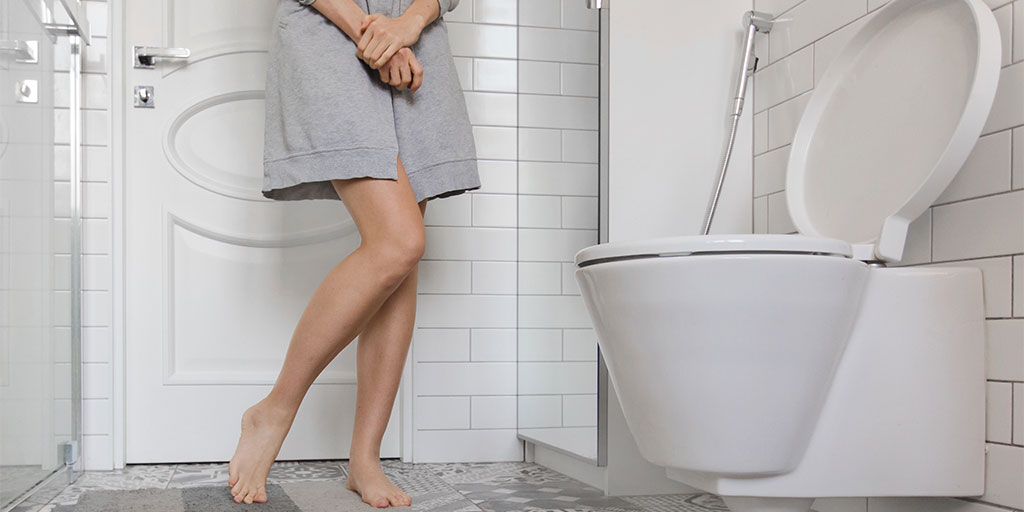Why Can’t I Control My Bladder?
Posted By:
Dr. Michael Coyle, DO FACOOG, FPMRS

You know the feeling. Your friend has just shared a funny anecdote. You feel the laugh forming in your throat. You dread what is coming because you know when the suppressed laughter releases, it typically does not come alone. Urinary incontinence is no laughing matter and affects millions of women regularly. Whether it accompanies coughs, sneezes, giggles or you simply just cannot contain the urge to go, it can negatively impact your lifestyle. Many women find themselves questioning, “why have I lost control of my bladder?” Still, others may believe the false narrative that it is a normal part of aging. At Coyle Institute, we help women understand the cause of their bladder issues and offer solutions to control it.
Who Is Affected?
While it affects men as well, the greatest number of patients who suffer from urinary incontinence are women. Physical changes resulting from pregnancy, childbirth and menopause are leading causes. These events can leave the pelvic floor muscles weakened resulting in loss of bladder control. Older women are more prone to suffer from urinary incontinence, but younger women can be affected too. True statistics are hard to come by as many women may be embarrassed or just assume it is something they must live with and therefore do not seek medical help.
Types of Bladder Control Issues
At Coyle Institute, we will first do a thorough exam and medical history to help determine the type of urinary incontinence that you suffer from. UI presents itself in many different forms and understanding this is key to selecting a successful treatment plan. Types of incontinence include stress incontinence, urge incontinence, overflow incontinence, functional incontinence and even mixed incontinence.
Urge incontinence
Commonly known as overactive bladder, urge incontinence is when one has a strong, unexpected urge to urinate immediately, often before they can reach a bathroom (usually caused by weakened pelvic muscles or a UTI).
Stress Incontinence
This occurs when stress or pressure on the bladder from coughing, sneezing, laughing or physical activity causes leakage (sometimes the result of medication or neurological disorders).
Overflow Incontinence
Overflow incontinence results when the bladder fails to fully empty and fills back up very quickly (often common in diabetics).
Functional Incontinence
This is caused by restricted mobility. A physical limitation may prevent you from getting to the restroom in time (ex. Being wheelchair-bound, arthritis-stricken hands).
Mixed Incontinence
This refers to experiencing a combination of the aforementioned issues.
Know your options and live the life you want.
Schedule an Appointment TodayTreatment Options
Once your urogynecologist has determined the type of incontinence, a treatment plan can be adopted. Treatments for bladder control issues range from non-invasive, minimally invasive and surgical.
Simple steps every woman can take to improve bladder function include pelvic exercises, frequent bathroom breaks, losing weight and avoiding foods that can cause constipation or irritate the bladder (coffee, carbonated beverages, alcohol, spicy foods). A diet rich in vitamins and non-acidic fruits and vegetables is beneficial as well. Medications may be prescribed to alleviate symptoms.
Additional remedies include using a pessary (a soft, flexible device placed in the vagina to help support pelvic organs) or a catheter.
Coyle Institute offers non-surgical and minimally invasive options that are both safe and effective.
diVa® Laser Vaginal Therapy
This treatment uses Hybrid Laser Technology to regenerate vaginal tissues and therefore strengthen pelvic structures. The result can relieve mild incontinence and increase vaginal lubrication for intimacy. The procedure takes minutes and involves no downtime.
Bulking Agents
The injection of a bulking agent (Durasphere) around the bladder and urethra causes them to thicken and close the opening in the bladder making it more difficult for urine to leak.
InterStim® Therapy
If you prefer a more permanent option, InterStim® therapy may be right for you. It is a minimally invasive outpatient procedure during which a small neurotransmitter device is placed under the skin near the sacral nerve allowing it to send electrical impulses from the nerve to the brain to the bladder to control the pelvic muscles and urination.
Know Your Options
If these are not viable for your treatment plan, more advanced surgical treatments may need to be explored including bladder neck suspension, sling procedures, prolapse surgery or an artificial urinary sphincter. Surgery is not to be taken lightly, and the experts at Coyle Institute will help you make an informed decision regarding your treatment plan.
Ignore the Lies and Take Control
Many women believe the lie that not being able to control their bladder is an inevitable part of life. Urinary incontinence not only affects your lifestyle, but it can also be a sign of a more serious, underlying condition. Our team at Coyle Institute offers experienced and cutting-edge treatment for bladder control issues. We are committed to improving women’s health. Contact our urogynecological experts today and let us help you get back to living your best life.

